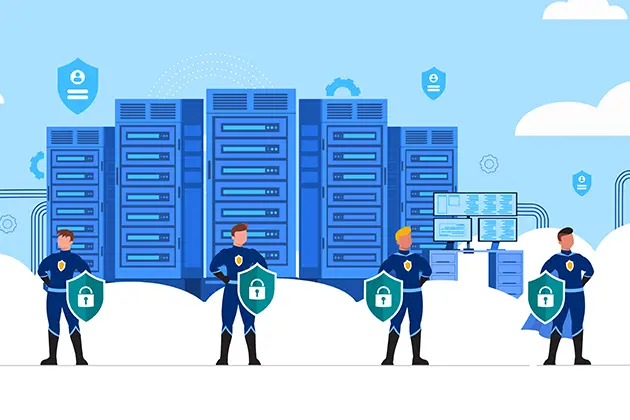Cloud computing gives your business more flexibility. That’s why over 90% of companies worldwide already use cloud services. However, despite cloud services’ cost-saving, flexibility, and scalability benefits, companies must grapple with the ever-looming threat of cyberattacks.
In 2023 alone, 82% of data breaches originated from cloud data. This fact alone necessitates a robust data security framework that safeguards sensitive data. It should also guarantee regulatory compliance, air-gapping backups and prevent downtime and financial loss from data breaches.
This article explores some of the most crucial best practices to secure data in the cloud.
Choose a Reliable Cloud Service Provider
Working with a cloud service provider means relinquishing some control over your data in exchange for cheaper, more efficient data management services. The mere fact that they have access to your data makes cloud service providers the first weak link in your data security practices.
However, like with any business, cloud service providers aren’t equal. When choosing a cloud service provider, you should go for a partner offering secure storage, encryption, and access control. The ideal cloud service provider should also comply with relevant security standards and regulations. These include compliance with HIPAA, ISO 27001, and PCI DSS.
Make Sure to Read the Fine Print
More than 90% of users accept legal terms and conditions without reading them, particularly when it involves software for personal use. However, the stakes are much higher when using cloud service providers, as your customers’ sensitive information may be at risk.
Thus, it is extremely important to sign up for any cloud service only after reading the user agreement policy. This document contains important information, such as how the service provider protects your data and whether you give them permission to use or sell it. This also applies to any updates to the provider’s security policy once you sign up.
Understand Your Security Responsibilities
While cloud service providers offer some level of protection for your data, most of the work remains in your hands. Your cloud service provider handles the infrastructure, while you are responsible for securing the data in the cloud is left in your hands.
Therefore, it is important to understand your duties and take the necessary measures to secure your data. You should put in place proper access control management. It is also vital to have data backup and recovery systems and continuous monitoring. You should also ensure compliance with set regulations.
Encrypt Your Data
Encryption is one of the most vital elements of cloud security. It involves coding data so that only authorized users can access it. While most companies have on-premises encryption for their data, they’re still vulnerable to cybersecurity threats, particularly when the data is in transit. As such, it is important to set up strong, multilayer encryptions for data in transit and at rest.
Implement Strong Authentication Controls
Passwords are among the oldest and most reliable forms of authentication control. However, there’s always the chance they may be stolen, compromised, or leaked. Combining them with other authentication methods can reduce this risk and improve effectiveness.
To further enhance security, using a password manager can help generate and store strong, unique passwords for each account, minimizing the risk of using easily compromised passwords. For instance, a multifactor authentication system is far more secure than a password alone. It consists of passwords and a code sent to a mobile app. Depending on the resources at your disposal, consider adding biometric identification to the authorization system.
Implement Access Control
Not every organization member needs access to all data. The more people have access to the data, the higher the possibility of leakage and the potential for other vulnerabilities that may increase the likelihood of a cyberattack.
Access controls can help limit access to sensitive data in the cloud. One of the best ways to implement access control is by following the principle of least privilege. In this approach, users only get the minimum access required to perform their tasks.
You could also implement role-based controls by assigning users roles and responsibilities based on their job responsibilities.
Continuously Monitor Cloud Activity
By continuously monitoring cloud activity, you can better detect and prevent unauthorized access to data in the cloud. Some of the most reliable cloud service providers offer monitoring services. They alert you, the administrator, whenever suspicious activity is detected.
To further protect your data, you should also review cloud logs and audit trails to identify potential security threats.
The Security of Your Data Lies in Your Hands
Cybersecurity threats are some of the biggest concerns for businesses using cloud services. While the cloud may offer greater flexibility than most on-premise data infrastructures, it faces numerous threats. These must be addressed to ensure data privacy, compliance, and consumer trust.
Applying the best practices mentioned above in your data protection policy may mean the difference between losing an outrageous amount of money to a data breach and having a smooth sailing experience with cloud computing.










